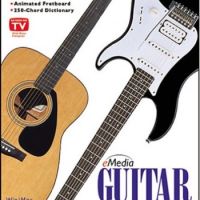
Posted January 16, 2013 at 9:25 am | No comments
AC/DC are widely considered as one of the greatest rock and roll bands of all time. Their classic albums and chart topping tunes have proven to have stood the test of time, with such songs as “Back In Black”, “Highway To Hell”, and “Hells Bells” are more popular than they ever were back in the day.
Posted in: Book Reviews, Instructional Book Reviews, Reviews, Uncategorized
Posted December 5, 2012 at 8:29 am | No comments
Following the release of their now classic debut album, Too Fast For Love, back in 1981, Motley Crue quickly rose in both worldwide popularity and rock and roll fame.
Posted in: Instructional Book Reviews, Music Industry Book Reviews, Reviews, Uncategorized

Posted November 20, 2012 at 11:03 am | No comments
One of rock and roll guitar’s first leading innovators, Jimi Hendrix had the power to pick up the guitar and make mind blowing music that was completely unrivaled in complexity and technique for the time.
Posted in: Instructional Book Reviews, Reviews, Uncategorized

Posted October 12, 2012 at 10:24 am | No comments
When they released their debut album, Too Fast For Love, back in 1981, Mötley Crüe immediately took the airwaves by storm with their outrageous hair, screaming guitars, and glam metal anthems.
Posted in: '80s Rock, Instructional Book Reviews, Reviews, Uncategorized

Posted January 3, 2012 at 2:24 pm | No comments
Love ’em or hate ’em, scales are important to any guitarist. Everybody knows the box method, with the five different patterns for each scale, and some guitarists subscribe to the 3 notes per string approach, but other than that, there haven’t really been any innovations with scales on the guitar lately. Enter New York jazz guitarist Adam Smale with A New Approach to Scales for Guitarists, which puts forth an interesting and useful 4 note per string method of learning and implementing scales.
Posted in: Book Reviews, Instructional Book Reviews, Reviews

Posted May 22, 2011 at 9:25 am | 2 comments
Everybody and their mother want to learn how to play guitar. The problem is, people often take lessons and either have too much thrown at them, or they get bored because their teacher has them playing out of a Mel Bay book that seems to be designed to bore people to death. eMedia Guitar Method V.5 seeks to give prospective guitar learners a way to learn at their own pace while keeping it interesting. Intended for beginners ranging from “I’ve never seen a guitar before” to “I know a couple easy songs,” Guitar Method is thorough and customizable, and it has some incredibly useful features.
Posted in: Instructional Book Reviews, Reviews

Posted December 22, 2009 at 4:08 pm | No comments
The Rolling Stones have been electrifying audiences with their live shows and numerous recordings since their debut in the early ’60s. The Stones are known for their crafty songwriting which draws from a wide variety of influences such as American blues, country, and folk music, giving them a truly original and recognizable sound. Not to mention the signature guitar riffs and styles of Keith Richards and Ronnie Wood, which have inspired generations of guitarists, and will continue to inspire new players long into the future.
Posted in: Classic Rock, Instructional Book Reviews, Reviews

Posted October 1, 2009 at 9:06 am | No comments
Aaron Shearer’s Classic Guitar Technique has been one of the most highly used and influential classical guitar method books for more that fifty years. Like many classical guitarists, I grew up learning from Shearer’s book and it’s the main pedagogical resource I now use in my private teaching studio. Alfred Music Publishing has recently introduced the third edition of Classic Guitar Technique, with the new edition being revised, updated, and re-edited by the maestro himself and one or his former students, Thomas Kitka.
Posted in: Classical, Instructional Book Reviews, Reviews

Posted September 22, 2009 at 7:17 pm | No comments
As classical guitarists and guitar pedagogues, we have become used to lugging around a mountain of books with us everywhere we go. There is a book for scales, a book for arpeggios, a book for right hand technique and a book for the left.
Posted in: Classical, Instructional Book Reviews, Reviews
Posted July 20, 2009 at 5:14 pm | No comments
The pentatonic scale is often the first scale guitarists learn when they begin to explore the realms of blues, rock and jazz improvisation. Though most guitarists learn the basic fingerings of this oft-used scale, maybe in different keys and positions across the neck, few players delve deep into the scale’s vast harmonic and melodic possibilities. Whereas rock and blues players such as Stevie Ray Vaughn, Jimmy Hendrix and Jimmy Page made careers by using common application of the pentatonic, and its closely related cousin the blues scale, during their improvised solos and riffs, jazz musicians such as Pat Metheny, John Scofield and Mike Stern have applied their knowledge of modern harmony to the pentatonic scale, greatly expanding the array of sounds and tonal colors that this scale can produce. In his book Jazz Guitar Soloing Concepts: A Pentatonic Modal Approach to Improvisation, Dr. Ronald S. Lemos dives into the modern world of the pentatonic scale and presents an exhaustive volume detailing the many harmonic and melodic variations this commonly used scale can produce.
Posted in: Instructional Book Reviews, Jazz, Reviews











